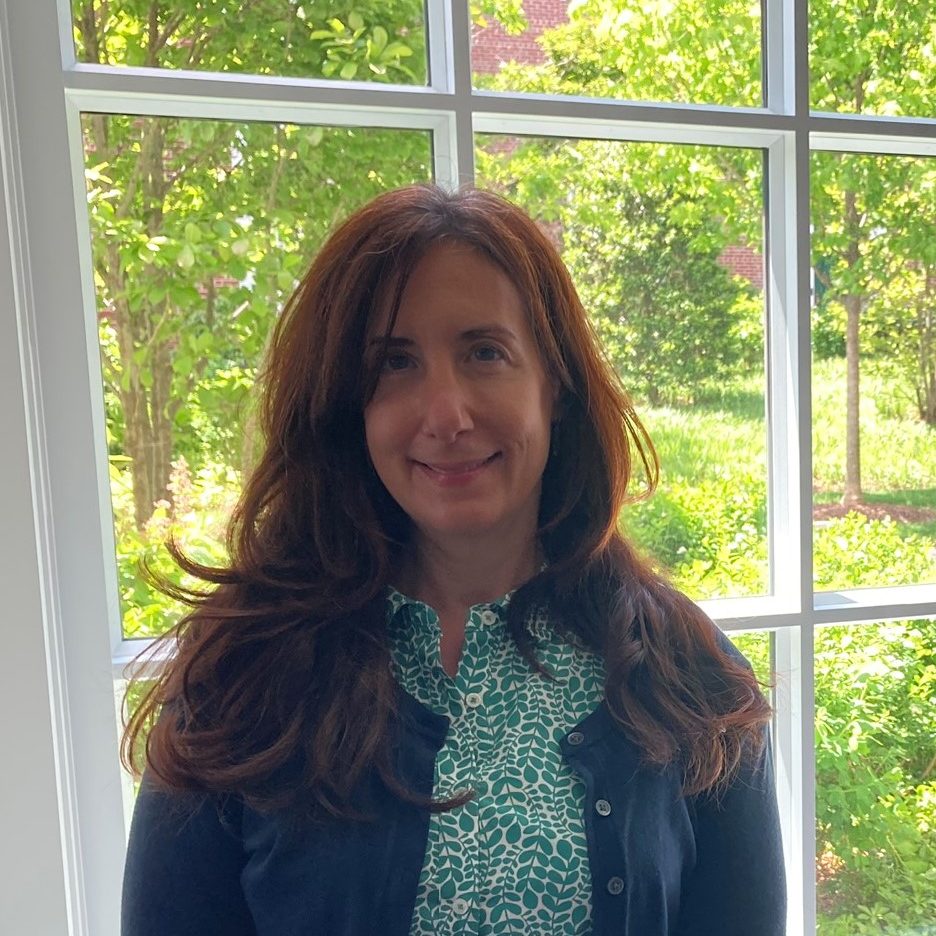4 Scaling Myths That Could Impact Your Startup

Scaling is harder than most perceive. Over 70% of tech startups fail to exit or raise follow-on funding. What can you do anything to increase your chances of beating the dismal odds? Shikhar Ghosh talked with Mudassir Sheikha, Adam Enbar, and Lara O’Connor Hodgson about the challenges they faced and the mistakes they made when scaling rapidly. We identify four common scaling myths that impede how most founders approach scaling. While no magic formula exists to guarantee success, understanding these myths—and how others handle them—can better equip you to meet its challenges and increase your chances of surviving.
4 Common Scaling Myths
- Scaling should be easier than starting and requires expanding your focus
- Skills that made you a great founder will help you as you scale
- Once you scale, you’re done—you can cement processes
- Scaling a business only matters to entrepreneurs
 Myth: Traits That Made You a Great Founder Will Ensure Your Success When Scaling
Myth: Traits That Made You a Great Founder Will Ensure Your Success When Scaling
We tend to romanticize Google, Facebook, Dropbox, and Amazon for retaining their founders in leadership roles. It’s important to remember that each company added outsiders with skills and strengths to offset the founders’ weaker areas. That can’t always happen and, in reality, the vast majority of founders get replaced as CEO, regardless of performance.
Research by Noam Wasserman, former HBS professor and current Professor of Clinical Entrepreneurship at the University of Southern California, illustrates that the roughly 50% of founders are replaced as CEO within 3 years and less than 25% of founding CEOs lead their companies’ initial public offerings. Why are most founders replaced? Ghosh shares his observations and Mudassir Sheikha, co-founder, and CEO of Careem, a mobile-based ride-hailing service, shares the lessons he learned as Careem became one of the first unicorns in the Middle East under his leadership as CEO.
Startup Strengths Can Become Scale-up Liabilities
In your startup’s early stages, founders have comprehensive knowledge of the entire business. They know how a minor decision made in one function could potentially impact the rest of the business and that integrated knowledge enables them to quickly make key decisions. A professor of management practice at HBS and advisor to hundreds of entrepreneurs, Shikhar Ghosh observed, “as you’re starting, strengths many founders possess—visionary thinking, passion, innovating quickly, making decisions based on experiential knowledge, and willingness to do whatever needs to be done—enable your business to survive.” But, as you scale, those strengths can become liabilities, and Sheikha learned this first hand.
When he co-founded Careem with Magnus Olsson, they not only wanted to build a transportation infrastructure in a region that didn’t have good public transport options, they wanted to build an institution that could truly impact the entire region. Careem grew rapidly—during their second year they expanded service from 4 to 8 cities and tripled the number of captains they employed. The number of customers serviced increased 12x. By their third year, Careem’s captains grew from 3,000 to 9,000. Their customer base increased 6x and the number of trips skyrocketed from 250,000 to 2,100,00.
As Careem grew, Sheikha and Olsson continued to use their integrated founders’ knowledge to make all major decisions because it seemed more efficient. They rationalized, “you can tell people what you want, but it is harder to specify how it should be done,” especially when moving at a fast pace.
The Trap of Doing Everything Yourself
They also persisted in doing work that they could have delegated—like answering service calls in the middle of the night and paying bills. They relied on their founders’ strengths—working tirelessly and doing whatever they needed to do to keep the company alive—as they’d done when Careem launched.
Both co-founders continued to remain on-call 24/7, literally responding to customer support calls at 2 or 3 a.m.
Working 20 hours a day, 7 days a week, might be more efficient temporarily. But during a hyper-growth phases, adopting an “I can do it all faster” attitude ultimately stunts your growth.
Shikhar Ghosh
Doing the work themselves offered a faster and less costly solution, at first. In the short term, it’s logical and expedient for the person with the most knowledge to make decisions. But that approach can’t be sustained, especially if you intend to grow beyond your current market. Sheikha recalled that the impulse to lead Careem as they’d done during its starting stages resulted in creating “a lot of skeletons” that “we had to go back and fix.”
Many founders react in this fashion. When you’re scaling, mistakes can have a catastrophic financial impact, so it’s understandable that most founders react by continuing to make all major decisions. It’s tempting to rely on your strengths and continue following the practices that got you to the point of scaling. But, Ghosh, reminds, “no founder, regardless of how visionary, can retain all knowledge and continue to make all decisions in a rapidly scaling venture.”
Adding a Strategic Partner or Co-Founder
To continue expanding, raise capital, and compete with Uber, Careem needed a strong position in the Saudi market. Instead of trying to expand on their own, they candidly assessed their weaknesses, which challenges many founders. Sheikha recognized that neither he nor Olsson spoke Arabic or had a connection to local authorities, so they decided to recruit Abdulla Elyas, an entrepreneur in Saudi Arabia with complementary tech skills and deep knowledge of local Saudi markets.
Instead of hiring him as a part of the executive management team, they relinquished some decision-making authority and equity and designated him as a co-founder. The decision communicated—internally and externally—that Careem respected the local cultural differences that existed in the MENA. They also created a structure that allowed for some local autonomy, which further reflected the company’s values.
From Doing to Empowering Others
Many founders are unable to successfully scale, research shows because they can’t adapt to the ways in which scaling alters their role. Sheikha advises scaling founders to resist the urge to continue doing everything yourself. As CEO, he was responsible for empowering others to make local decisions and establishing a cohesive company-wide culture. That required a complete shift in thinking, he confessed, but it was worth it. In under six years, Careem grew from a small startup to a unicorn. Sheikha learned that focusing on people, especially getting the right people into the right roles, drove the business through growth.
 Myth: Scaling is Easier than Starting & Requires Expanding Your Focus
Myth: Scaling is Easier than Starting & Requires Expanding Your Focus
After spending decades building and leading companies, then advising other entrepreneurs, Ghosh observed, “most entrepreneurs assume that, if they launched a successful business, scaling it will be relatively easy.” Now, he advises founders that the opposite is true: starting a new venture is relatively easy because “the enthusiasm you and others feel at the start of a new endeavor gives you momentum that can sustain you.” When that honeymoon period ends, it’s not easy to know what to do next.
Transitioning from Starting to Scaling
Often, founders equate reaching product-market fit with reaching a finish line; but it’s more of a mile-marker. Once you have PMF and begin to scale, things change in ways that many founders find counterintuitive.
Adam Enbar, co-founder of Flatiron School, a coding school that is disrupting higher education, recalls the challenges he faced while Flatiron expanded and began rapidly scaling. Launched in 2012, the coding academy raised over $14 million and grew to over 300 employees within 5 years. In 2017, the unicorn WeWork acquired Flatiron, with the intent of furthering its mission.
Problems with Pursuing Multiple Opportunities
At the start, Flatiron School had one primary goal—“we knew we wanted to start a school that got people great jobs”—and they pursued many divergent avenues to reach it. He recalls an early pilot with the City of New York, to expand Flatiron’s offering to attract lower-income audiences: “They funded all these scholarships and it worked… It expanded our potential market size. It certainly expanded the impact we had, and it had this unbelievable impact on our ability to recruit great talent.”
In 2016, they launched an online program, operated their own campus programs, and experimented with K-12 education. They were always searching for big partnerships, believing, “one big partnership could have a great impact and . . . propel us forward,” he remembers.
All this stuff was going on with a relatively small team, and we just weren’t doing anything particularly well.
Adam Enbar
Narrowing Focus Can Help You Scale
Like many entrepreneurs, he initially tried to continue expanding as they scaled. But as Flatiron grew, the willingness or desire to try new things created problems. Dividing resources—time, money, and the team’s attention—among multiple initiatives became problematic and began to dilute the sense of collaboration.
And Enbar discovered that to transition “from a business that’s doing interesting things to doing something that actually has the potential to scale to millions of people” required a narrowing of focus.
To really scale the company, it’s not about those big partnerships or those big glitzy things. It’s about focus. It’s about the incremental month over month growth.
Adam Enbar
As a result, Flatiron had to make some hard decisions—like shutting down half of the avenues they had been pursuing, even some that were cash flow positive. The decision to choose one primary path and pursue it intently was angst-provoking. Enbar confessed, “I like the big partnerships, I like the brand new things, the shiny objects” so choosing one direction didn’t come naturally, plus “it’s especially hard when you have little money” to put all of your eggs in one basket.
But he knew that continuing to pursue multiple paths would dilute their mission and cause them to eventually stagnate or burn out. So he honed in on realigning the team to one opportunity that epitomized Flatiron’s mission.
We said we’re going to put all of our money—all of our focus—on this one thing. And we’re going to do it very, very well. It completely changed our business.
Adam Enbar
Narrowing focus at Flatiron helped optimize collaboration, Enbar noted, it allowed everybody in the company to start “rowing in the same direction in the same boat as opposed to . . . parallel paths.”
 Myth: Once You Scale, You’re Done—You Can Cement Processes
Myth: Once You Scale, You’re Done—You Can Cement Processes
Scaling doesn’t just occur as one phase, reach it and you’re done. It occurs over many stages. You need to change what you do and how to do it. You need to rethink things.
Lara Hodgson notes that scaling entails a constant reinvention and bringing in new things. She equates the phase with adolescence but remarks that often people don’t realize it’s a unique stage. “Each time you do something to move forward,” she sighs, “you actually move backward, temporarily.”
 Myth: Scaling a Business Only Matters to Entrepreneurs
Myth: Scaling a Business Only Matters to Entrepreneurs
Startups emerge and vanish regularly. Why would your company’s failure to scale matter to anyone beyond you, your employees, and customers? A company’s ability to scale has a significant impact on the greater economy. Why?
Scaling companies have a huge impact on employment rates. Contrary to popular belief, neither big nor small companies add employment growth. As new small companies appear, they generate jobs. However, often, for every small company that emerges, another closes. Employment comes from small companies that succeeded in scaling.
EXPLORE MORE
In “Unicorns Are Breeding Like Rabbits: Set to Double 2014’s Record Pace,” CB Insights reports that although the rate of unicorn creation has accelerated in recent years, just over 1% of companies achieve a billion-dollar valuation.

